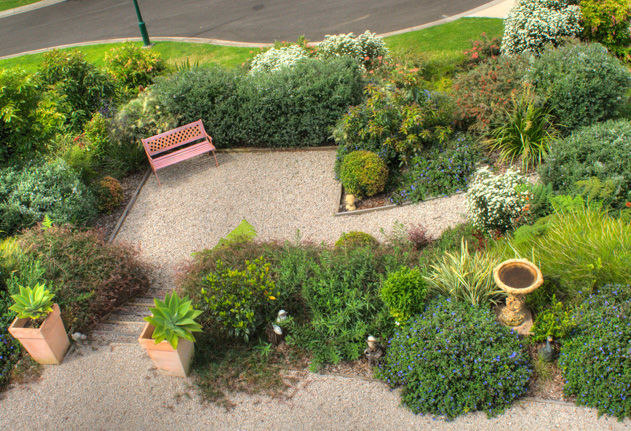

If you decide to get rid of your leaves, don’t throw them in the trash. If you’re worried about leaves blowing out of your garden beds, you can shred them into a finer textured mulch by putting them in a big trash can and using hedge clippers to chop them down into smaller pieces less likely to blow away. Any landscape with deciduous trees and shrubs–including your own yard–will benefit from a layer of fallen leaves to protect plant roots, preserve soil moisture, suppress weeds, and provide natural fertilizer.
#Fallen leaf landscaping free#
Why spend money on mulch and fertilizer when you have a free source in the form of fallen leaves? Simply let leaves lie where they fall or move them into your garden beds to protect your plants’ roots, suppress weeds, preserve soil moisture and eventually break down and return nutrients to the soil. Leaves form a natural mulch that helps suppress weeds and at the same time fertilize the soil as they break down. Leaves are Free Mulch and Fertilizerįrom a gardening perspective, fallen leaves offer a double benefit. Some birds, such as ovenbirds, also nest in the leaf layer on the ground rather than in the branches.Įven some bat species overwinter in the leaf layer and can’t survive severe cold temperatures without it. If you remove all of your fallen leaves, there will be fewer of these insects in and around your yard and fewer birds too. The vast majority of our backyard birds - some 96 percent - rely on those butterfly and moth caterpillars as the primary food source for their babies during the nesting season.

Many bird species forage in the leaf layer searching for insects and other invertebrates to eat, including wood thrushes, towhees, robins, sparrows, common yellowthroats, bobwhites, and wild turkeys. Credit: Lisa Mey via National Wildlife Photo Contest.

Luna moths are one of the many moth species that rely on a layer of fallen leaves to complete their lifecycle. If you rake up and throw away all of your leaves this fall, you’ll be getting rid of important habitat for these beautiful and beneficial insects, many of which are pollinators. In the case of moths, 94 percent of species rely on the leaf layer to complete their lifecycle. Some species overwinter as eggs, some as pupae, and some as adults. Many butterfly and moth species overwinter in the leaf layer, including luna moths, great spangled fritillaries, woolly bear caterpillars (which become Isabella tiger moths), and red-banded hairstreaks. The leaf layer is its own ecosystem! Many wildlife species use the leaf layer as their primary habitat including salamanders, chipmunks, wood frogs, box turtles, toads, shrews, earthworms, millipedes, and thousands of insects species. Leave the Leaves for WildlifeĪ leaf layer several inches deep is a natural thing in any area where trees and shrubs naturally grow, whether that’s the local woodlands or your own yard or garden.
#Fallen leaf landscaping how to#
Read on to find out why and for tips on how to minimize the time you spend raking this autumn and maximize the benefit to wildlife and the greater environment that fallen leaves offer. Leave the leaves - they offer a lot of benefits for wildlife and your garden. You shouldn’t feel obligated to get rid of every last fallen leaf in your yard this fall.


 0 kommentar(er)
0 kommentar(er)
